Wild Tobacco,
Native Tobacco
Display all 9 images
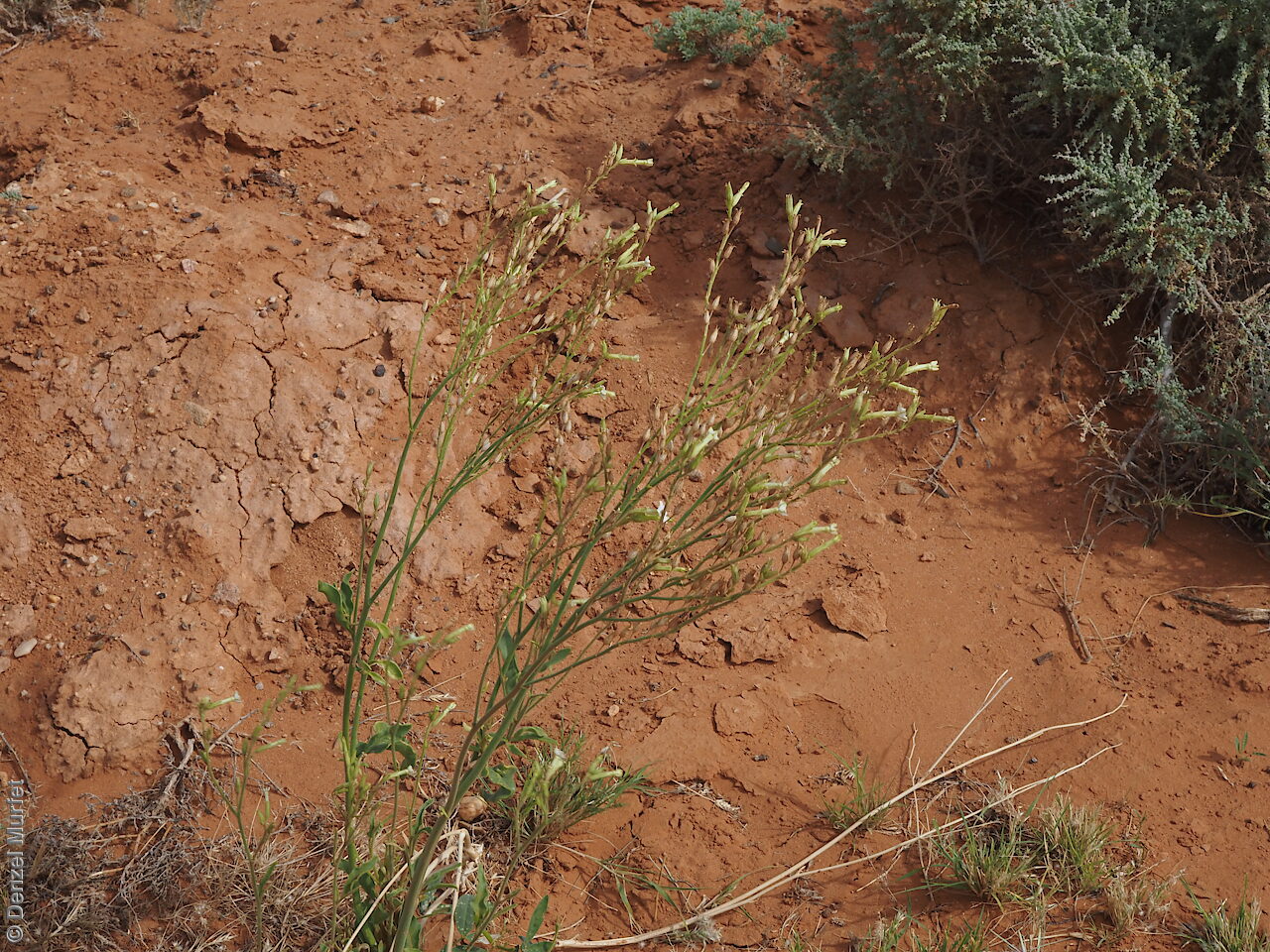
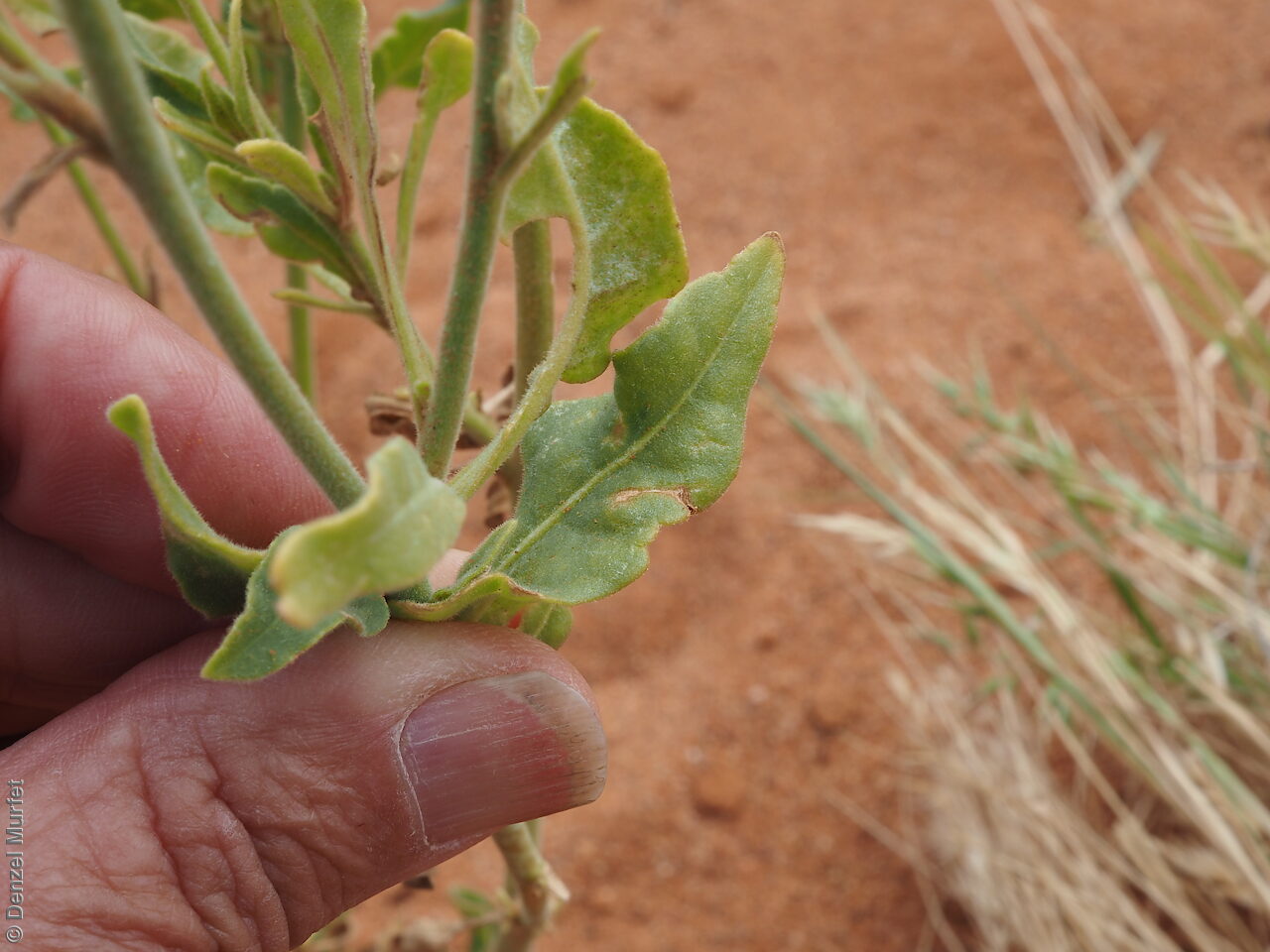
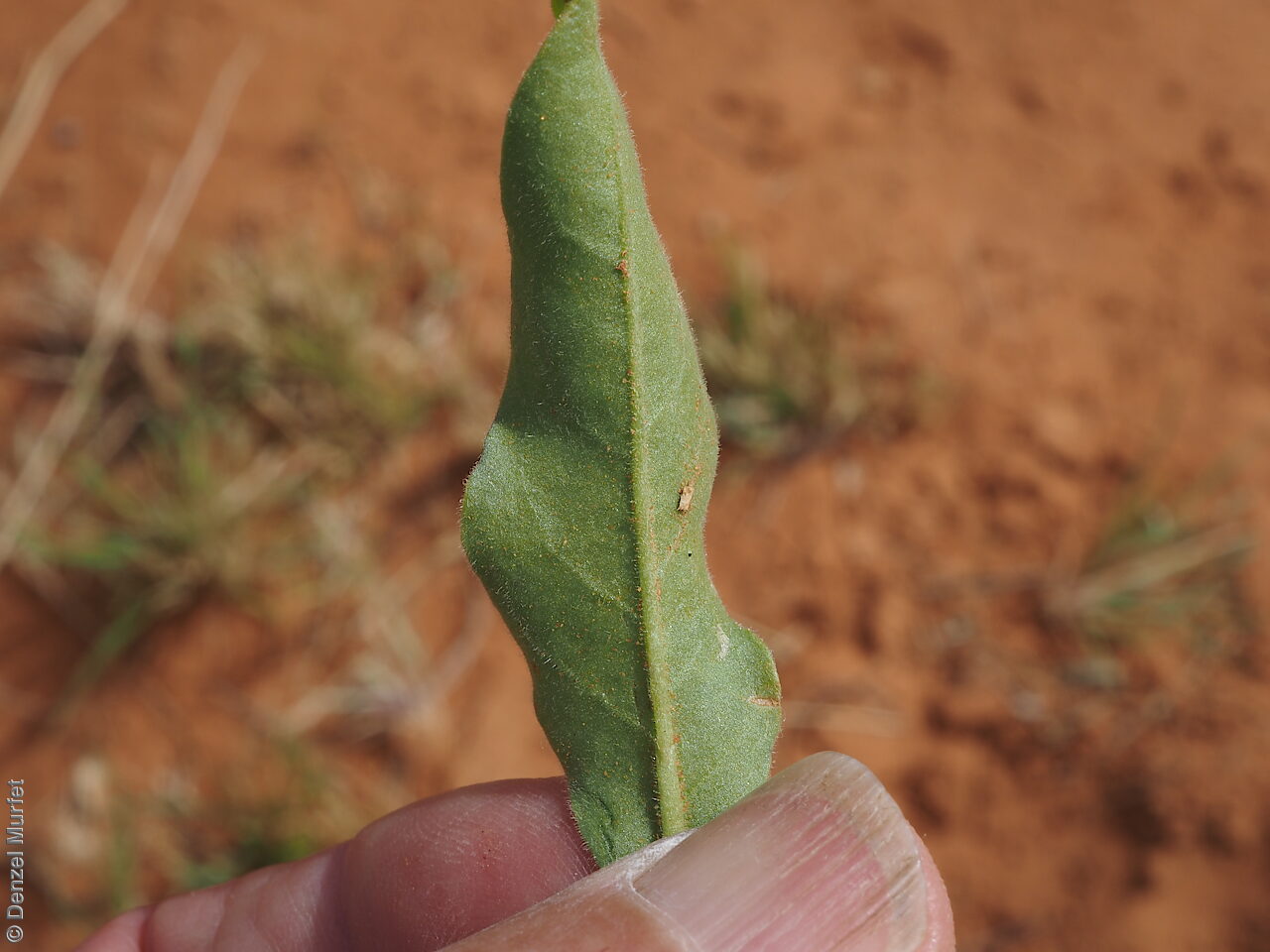
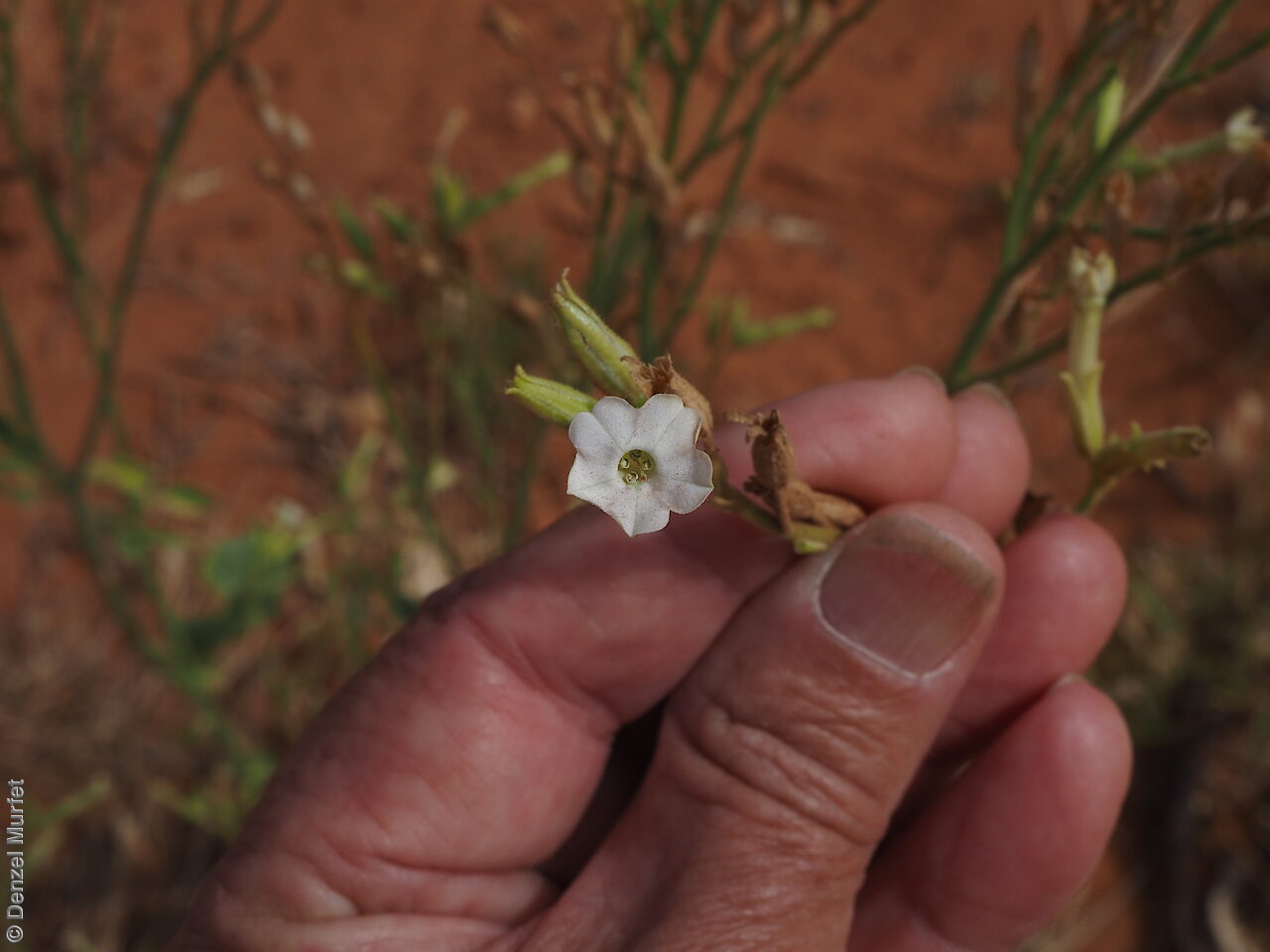
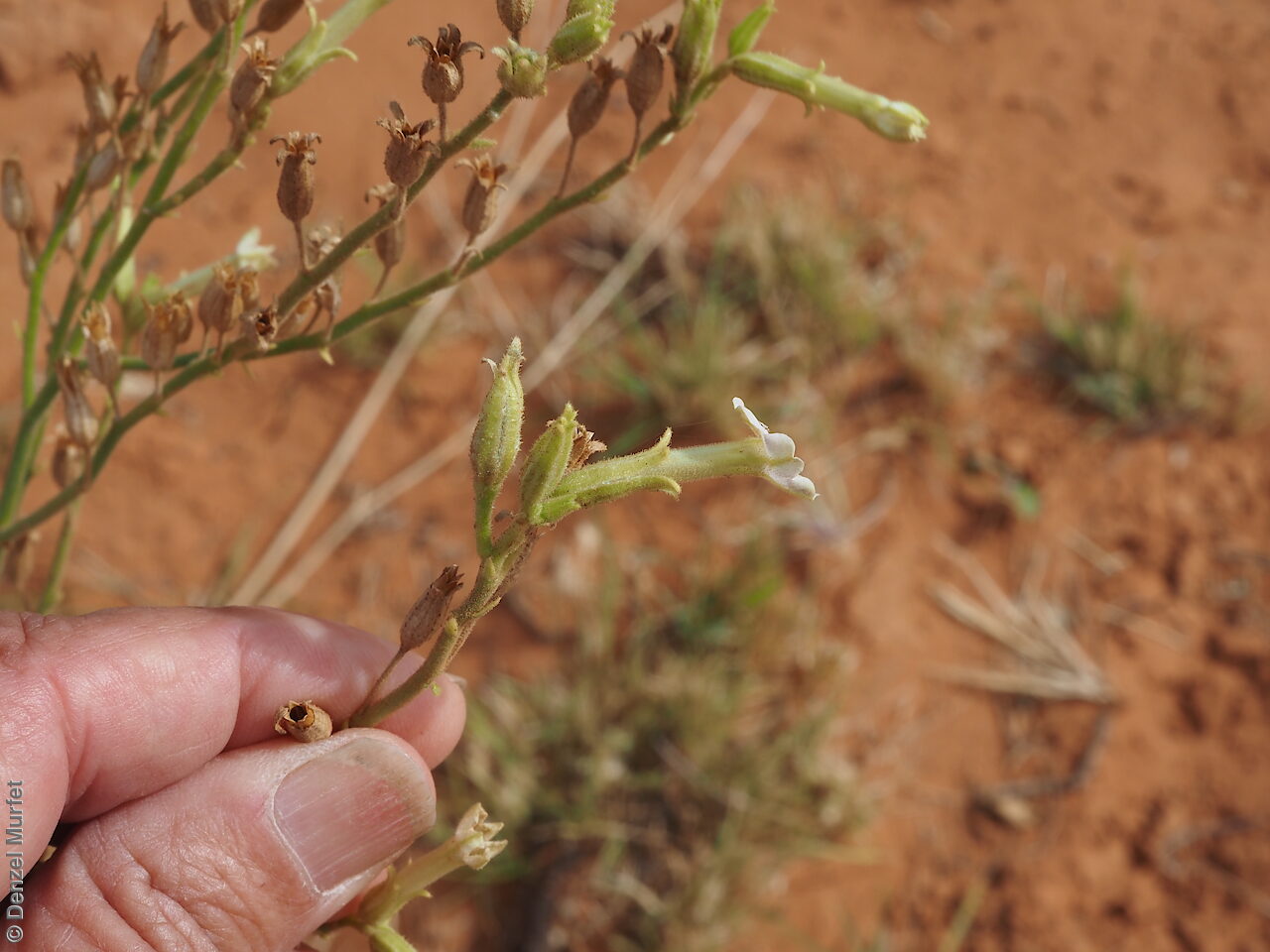
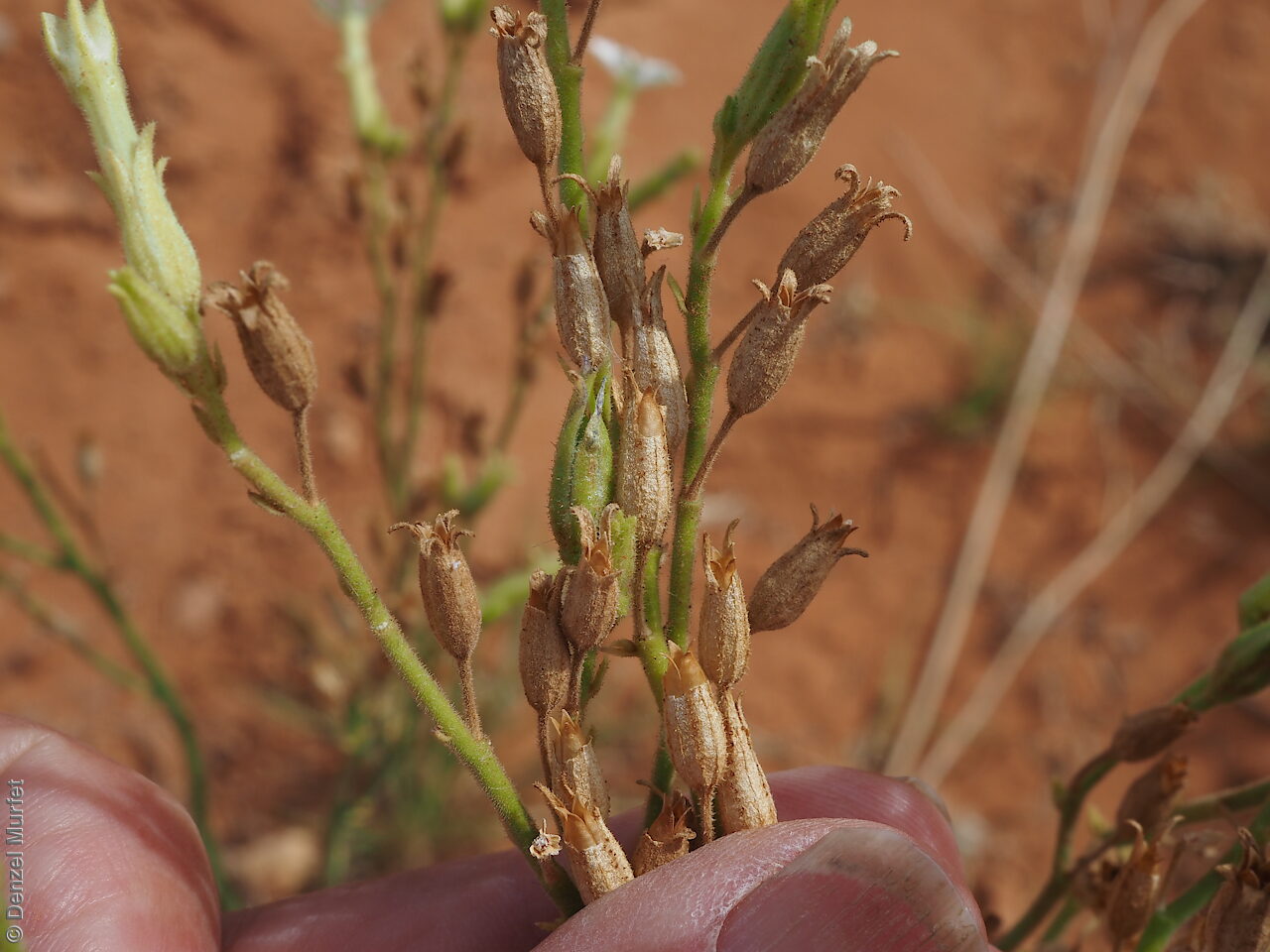
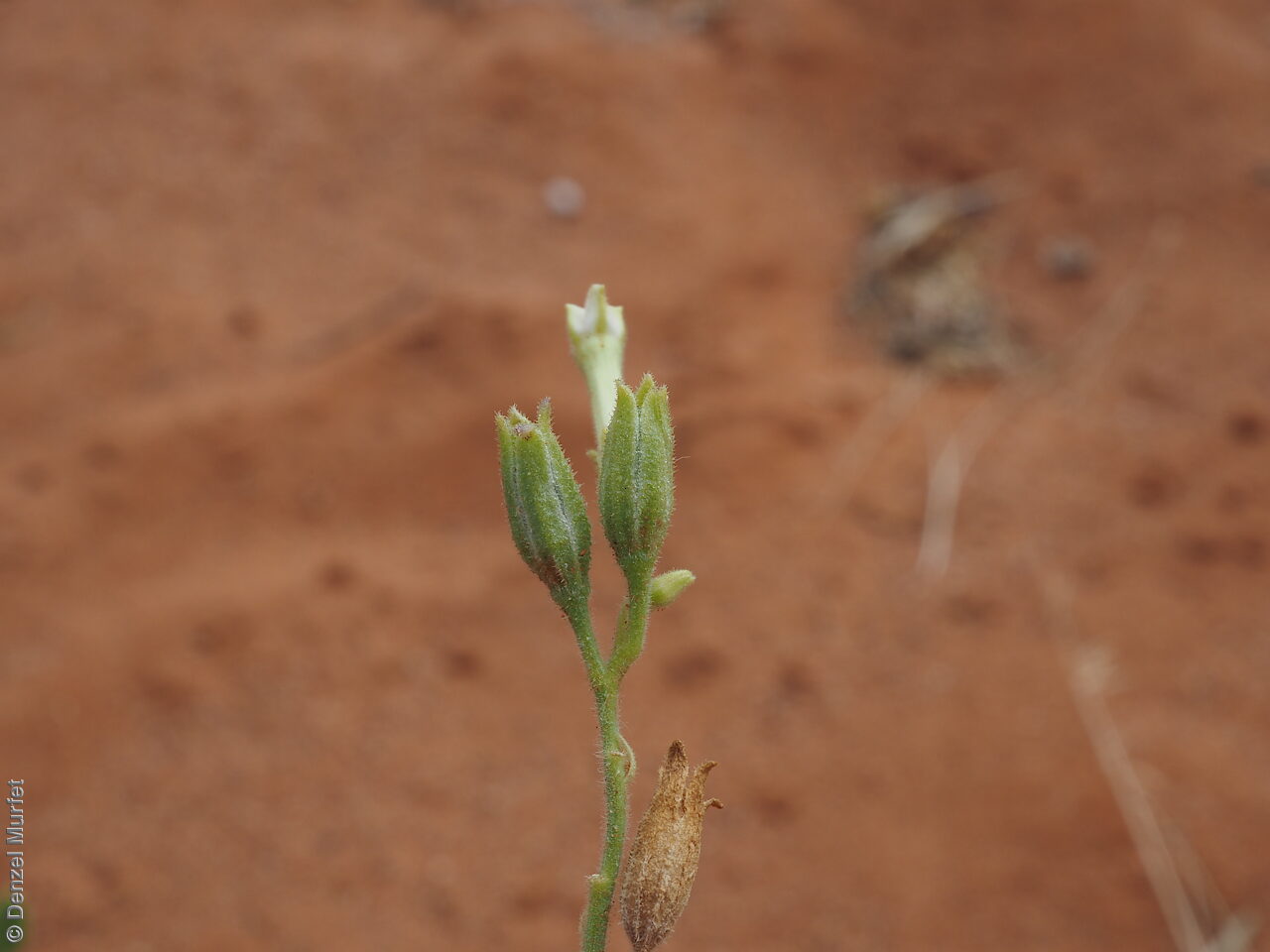
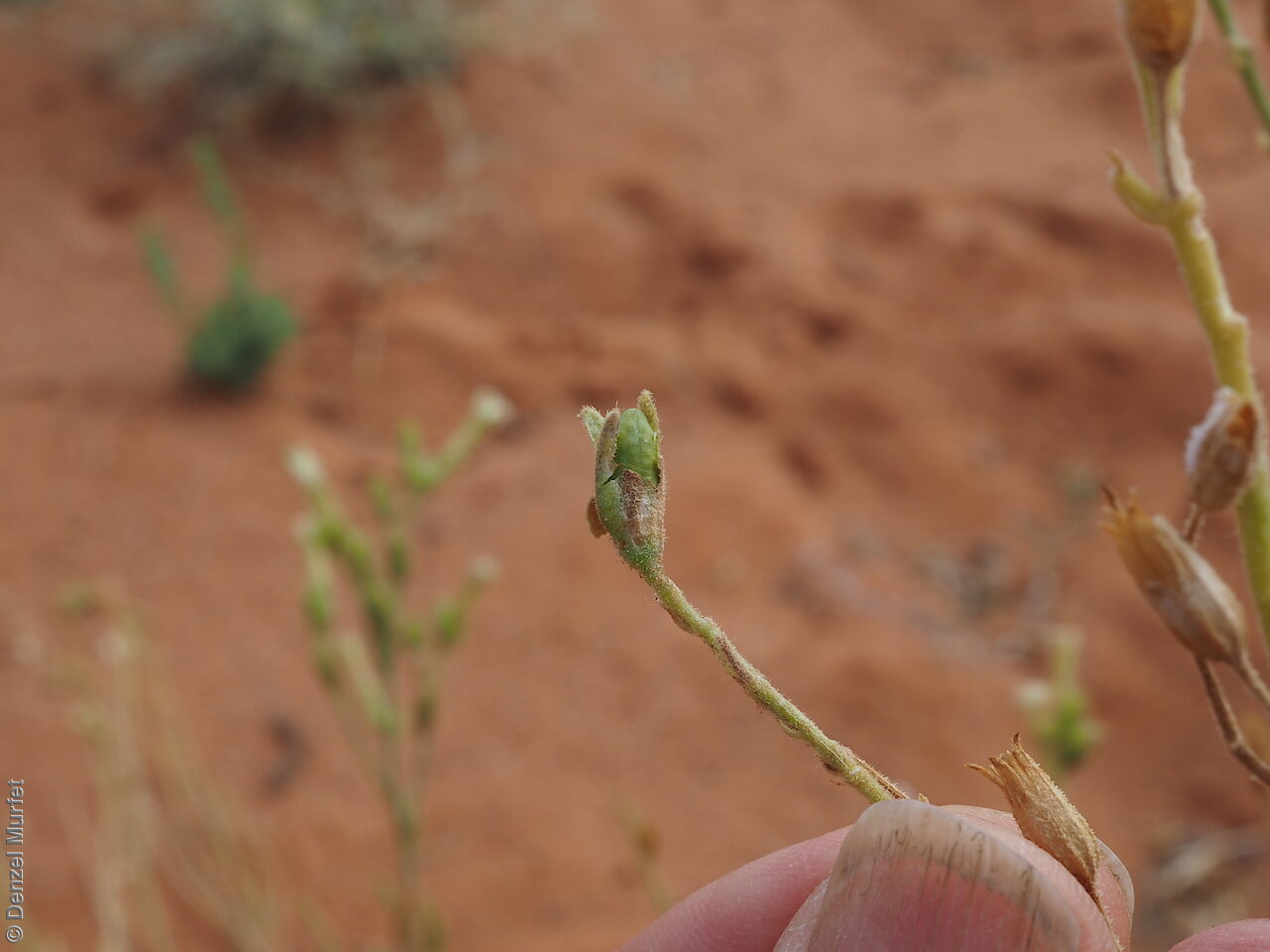
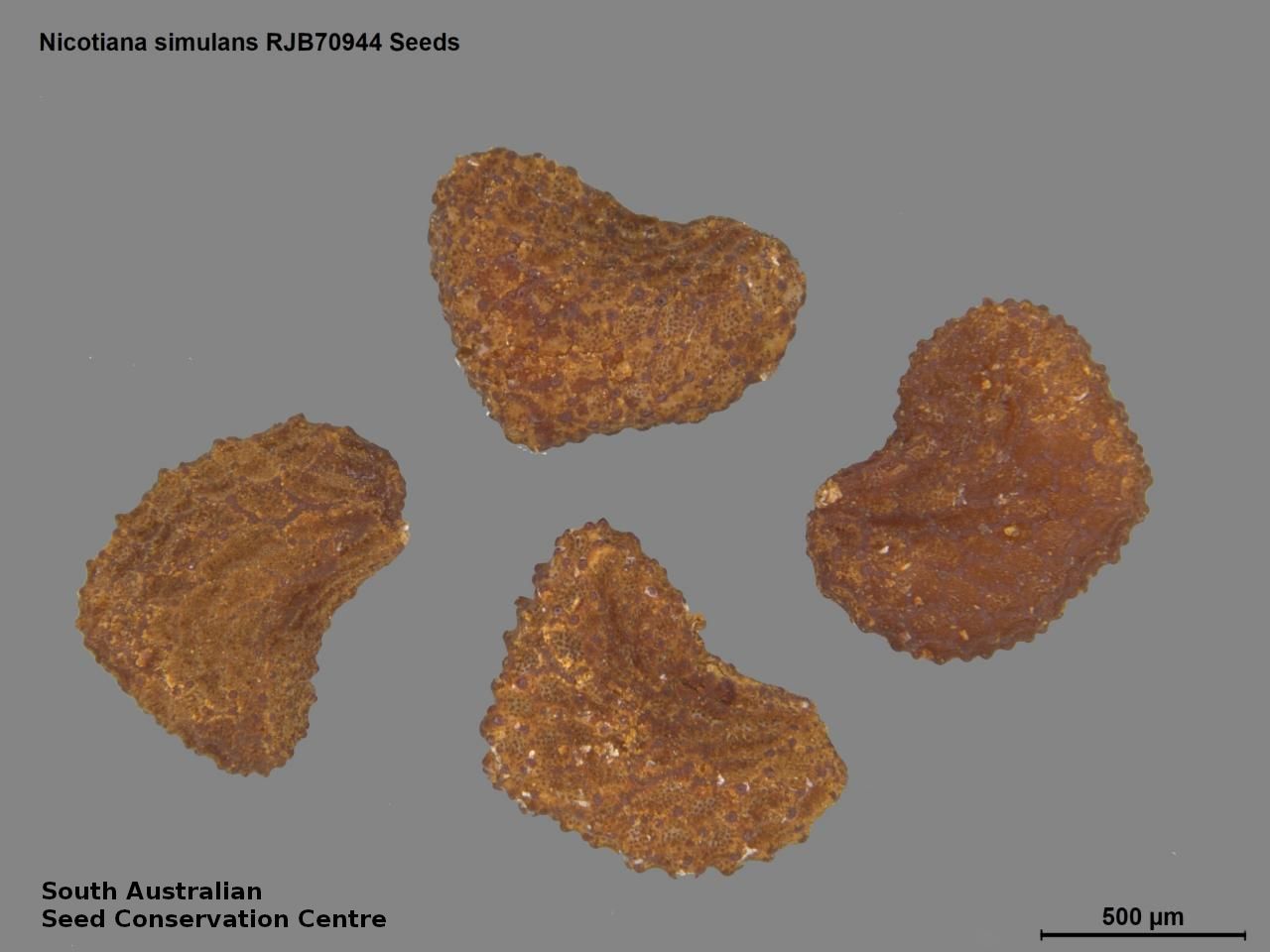
Regional Species Conservation Assessments per IBRA subregion.

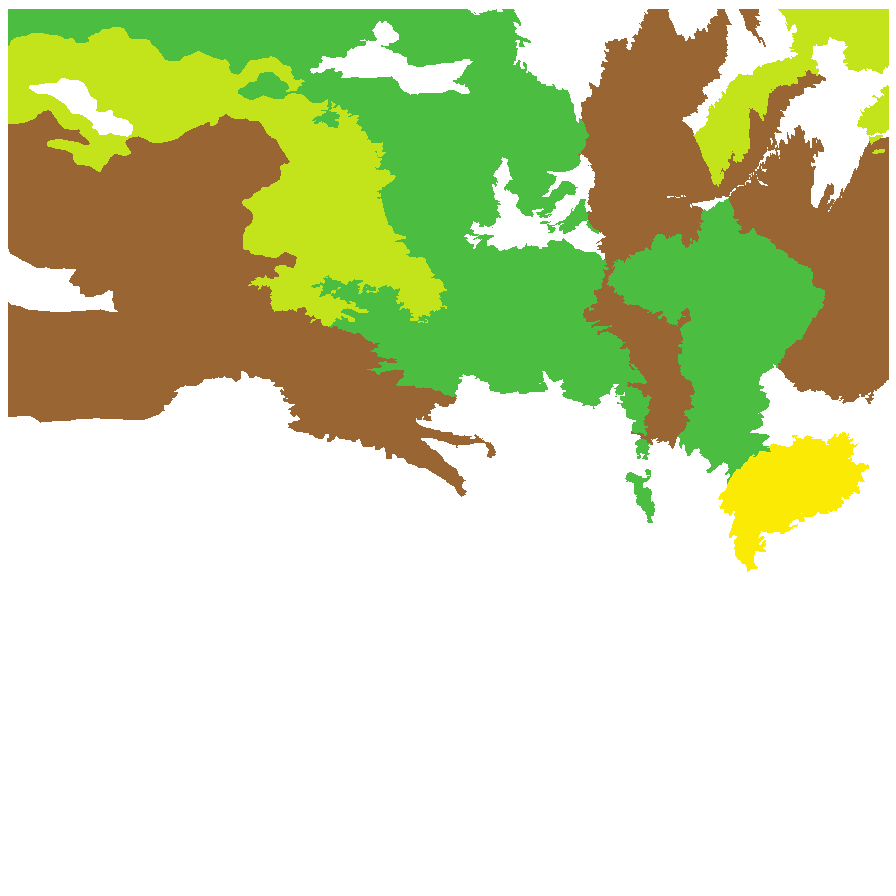
Least concern
Near threatened
Rare
Vulnerable
Endangered
Critically endangered
Extinct
Data deficient
Adelaide
Arkaroola
Ceduna
Coober Pedy
Hawker
Innamincka
Marla
Marree
Mount Gambier
Oodnadatta
Renmark
Wudinna
Keith
Yunta
Display IBRA region text
| Olary Spur (FLB03) | Flinders Lofty Block | Vulnerable (IUCN: VU D1+2) [desert sp., on edge of range] |
| Northern Flinders (FLB05) | | Least Concern |
| Central Flinders (FLB06) | | Data Deficient [questionable ID] |
| Arcoona Plateau (GAW04) | Gawler | Least Concern [southern limit] |
| Kingoonya (GAW05) | | Least Concern [southern limit] |
| Torrens (GAW06) | | Rare (IUCN: RA d(ii)) |
| Roxby (GAW07) | | Least Concern |
| Commonwealth Hill (GAW08) | | Near Threatened |
| Maralinga (GVD03) | Great Victoria Desert | Rare (IUCN: RA d(i,ii)) (Probable Decline) [edge of range] |
| Kintore (GVD04) | | Near Threatened |
| Tallaringa (GVD05) | | Near Threatened |
| Yellabinna (GVD06) | | Rare (IUCN: RA d(i,ii)) [edge of range] |
| Nullarbor Plain (NUL02) | Nullarbor | Rare (IUCN: RA d(i,ii)) (Probable Decline) [edge of range] |
| Bimbowrie (BHC05) | Broken Hill Complex | Vulnerable (IUCN: VU D1+2) |
| Dieri (SSD03) | Simpson Strzelecki Dunefields | Rare (IUCN: RA d(ii)) |
| Strzelecki Desert (SSD05) | | Rare (IUCN: RA d(ii)) |
| Breakaways (STP01) | Stony Plains | Least Concern |
| Oodnadatta (STP02) | | Least Concern |
| Murnpeowie (STP03) | | Least Concern |
| Peake-Dennison Inlier (STP04) | | Least Concern |
| Macumba (STP05) | | Least Concern |
| Witjira (STP06) | | Least Concern |
| Baltana (STP07) | | Least Concern |
| Sturt Stony Desert (CHC02) | Channel Country | Near Threatened |
| Mann-Musgrave Block (CER01) | Central Ranges | Least Concern |
| Everard Block (CER03) | | Least Concern |
| Tieyon (FIN03) | Finke | Least Concern |
| 3 of 6 subregions | Flinders Lofty Block | Least Concern , Vulnerable , Data Deficient |
| 5 of 8 subregions | Gawler | Least Concern , Near Threatened , Rare |
| 4 of 4 subregions | Great Victoria Desert | Near Threatened , Rare |
| Nullarbor Plain (NUL02) | Nullarbor | Rare (IUCN: RA d(i,ii)) (Probable Decline) [edge of range] |
| Bimbowrie (BHC05) | Broken Hill Complex | Vulnerable (IUCN: VU D1+2) |
| 2 of 4 subregions | Simpson Strzelecki Dunefields | Rare |
| 7 of 7 subregions | Stony Plains | Least Concern |
| Sturt Stony Desert (CHC02) | Channel Country | Near Threatened |
| 2 of 3 subregions | Central Ranges | Least Concern |
| Tieyon (FIN03) | Finke | Least Concern |
Botanical art
Kath Alcock paintings: 3
Common names
Wild Tobacco
Native Tobacco
Etymology
Nicotiana, named after Jean Nicot (1530-1600), a French Ambassador for the King of France to Lisbon in 1560, who sent the first tobacco plant to France. Simulans, mean similar, possibly alluding to the similarity of this species to other Nictotiana species.
Distribution and status
Found in the northern part of South Australia growing in sandy and rocky soils, usually in shelter of boulders or in litter under trees, frequently near minor water courses. Also found in Western Australia, Northern Territory, Queensland and New South Wales. Native. Common in South Australia. Rare in Queensland. Common in the other States.
Herbarium regions: North Western, Lake Eyre, Gairdner-Torrens, Flinders Ranges, Eastern, Eyre Peninsula
NRM regions: Alinytjara Wilurara, Eyre Peninsula, South Australian Arid Lands
AVH map: SA distribution map (external link)
Plant description
Herb to 1.2 m, with glandular hairs. Leaves mostly basal, to 23 cm long and 12 cm wide; elliptic, narrowly to broadly winged. Stem leaves narrowly ovate or elliptic. Inflorescence an erect panicle-like spike with tubular white flowers. Flowering between May and October.
Fruits are brown ellipsoid to ovoid capsule to 13 mm long. Seeds are brown reniform seed to 1 mm long and 0.5 mm wide, covered in small tubercules. Seed embryo type is linear, fully-developed.
Seed collection and propagation
Collect seeds between September and December. Collect mature capsules that are brown or turning a pale straw-colour and contain brown seeds. Can collect individual capsules or break off the whole fruit spike. Place the capsules in a tray and leave to dry for one to two weeks, then rub the capsules gently by hand to dislodge the seeds. Use a sieve to separate the unwanted material. Store the seeds with a desiccant such as dried silica beads or dry rice, in an air tight container in a cool and dry place. From one collection, the seed viability was high, at 95%.
| Location | No. of seeds
(weight grams) | Number
of plants | Date
collected | Collection number
Collection location | Date
stored | % Viability | Storage
temperature |
MSB |
510,000 (25.53 g) | 50-60 | 25-Nov-2005 | DJD248
Eastern | | 0% | |
BGA
MSB | 11,000 (1 g)
11,000 (1 g) | 50 | 12-Mar-2007 | RJB70944
Gairdner-Torrens | 1-Aug-2007 | 95% | -18°C |
Location: BGA — the seeds are stored at the Adelaide Botanic Gardens, MSB — the seeds are stored at the Millennium Seed Bank, Kew, England.
Number of plants: This is the number of plants from which the seeds were collected.
Collection location: The Herbarium of South Australia's region name.
% Viability: Percentage of filled healthy seeds determined by a cut test or x-ray.










